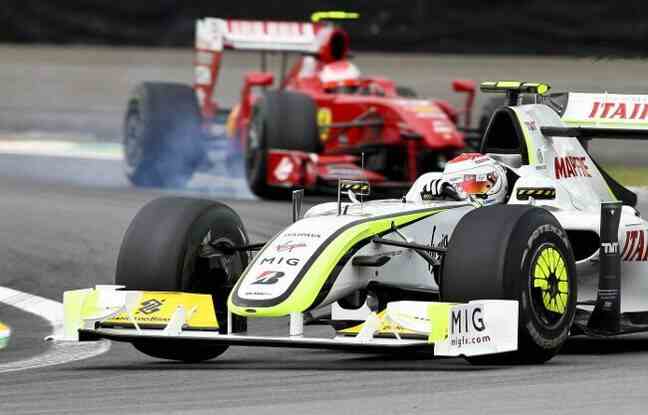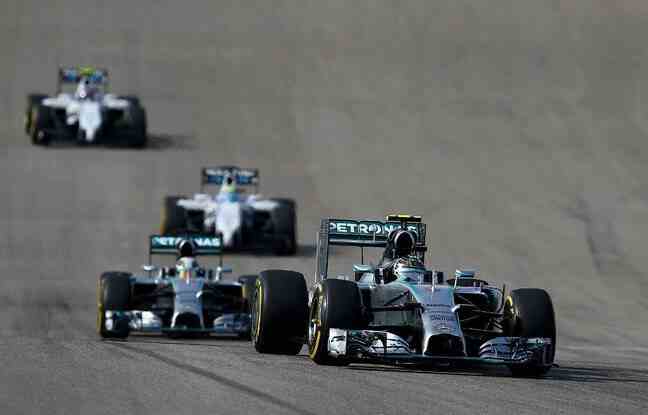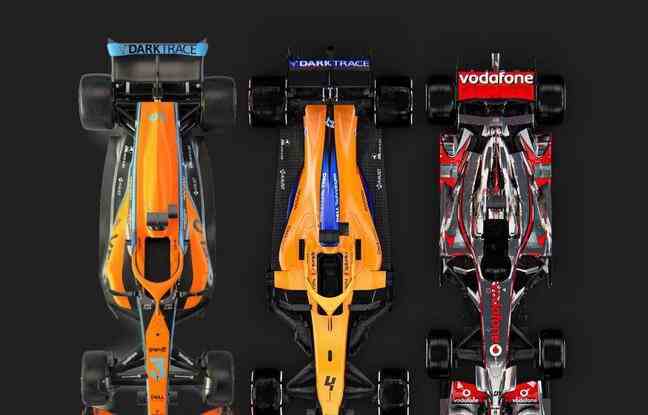The biggest revolution in Formula 1 for 40 years, according to many observers. The 2022 F1 World Championship begins this weekend with the Bahrain Grand Prix, at the Sakhir circuit, and everyone is waiting to see the hierarchy of this new season. It could be overhauled after the introduction of the new regulations, to allow cars to follow each other more easily, and to offer more shows, while F1 has already evolved enormously since the beginning of the 2000s. 20 minutes takes stock of these modifications with Frédéric Vasseur, boss of Alfa Romeo, after working for Renault.
2009, the surprise Brawn GP
The year 2009 marked a big change in terms of aerodynamics, after 2008 and “very very complicated” F1 cars. “There had been a big aero rule change, and that’s where Brawn, out of nowhere, won the championship. It had redistributed the cards, they had found the story of the double broadcaster, ”recalls Frédéric Vasseur. A technological discovery on the back of single-seaters allowing to gain almost two seconds per lap, used by Jenson Button to win the 2009 world championship, before being quickly copied by the competition.

This had led to Redbull’s domination from 2010. “In continuity, everyone understood Brawn’s trick, and therefore applied it to their car. Redbull, already equipped with the dominating Renault engine thanks to a good compromise between driving and performance, was able to take advantage of it to win all the titles until 2014 with Sebastian Vettel”.
2014, the hybrid era and Mercedes domination
According to Frédéric Vasseur, “you really need new engine technology to offer a certain advantage”. And that’s what happened in 2014 with the introduction of a new engine, hybrid moreover, with the appearance of the V6, against a V8 in previous seasons. “Indeed, where there was a big gap was with the appearance of the hybrid era in 2014 which really gave the Mercedes engine a head start. The Williams team, equipped with the same engine, and Mercedes were still 1, 2, 3 and 4 in the standings. They crushed everything, ”says the boss of Alfa Romeo.

A domination at the engine level which has allowed Mercedes to win all the constructors’ titles since the introduction of the hybrid area since 2014. Only Max Verstappen, with his Redbull, came to steal the title of world champion from them last year. , after the crushing reign of Lewis Hamilton, interspersed with the title of Nico Rosberg, with Mercedes, in 2016. Previous changes, such as the switch from V12 to V10 at the very beginning of the 2000s, then from V10 to V8 in hadn’t reshuffled the cards as much as the advent of the hybrid in 2014.
From 605 kg in 2007 to 798 kg in 2022, the constant weight gain
If there is one constant since the end of the 2000s, it is the weight gain of single-seaters. And this 2022 season corresponds to the biggest weight gain in the history of F1, with 46 kg more (from 752 kg to 798 kg on average). The main reason ? The appearance of the new 18-inch tires while each weighs about 5 kg more than those of 13 inches, hitherto used in F1. “Weight is clearly the number one opponent of performance. With 10 kg more, it’s 3/10th of a second slower per lap. It’s a real issue, because the drivers complain about these heavy cars for the pleasure of driving. But we also do it for them…”, confides Frédéric Vasseur.

Because this constant weight gain is above all the consequence of the improvement in safety, with ever stricter crash-test criteria. “For 20 years, the factors have been multiplied by three or four, and every year they increase by about 10%. But the pilots are also the first to be satisfied with these safety measures”, continues Fred Vasseur. The installation of the safety halo, following Jules Bianchi’s fatal accident in 2015, alone weighed down the single-seaters by a good ten kilos. But without him, the clash between Verstappen and Hamilton, at Monza in 2021, could have cost the British driver much more.
And for this new 2022 season?
In addition to the introduction of 18-inch rims and the weight gain of single-seaters, the regulations are changing a lot for this 2022 season. To the point that for some observers, this is the biggest revolution in F1 for 40 years.
> New aerodynamic rules, to promote ground effect and therefore allow F1 cars to follow each other more easily in close quarters
> Modification of engines to allow them to use biofuels
> Introduction and implementation of a budget ceiling.
Here are the main changes for this 2022 season, with the desire for Liberty Media, American owner of F1, to promote the show. “It’s the first time that we have had to design a car with a capped budget,” notes Frédéric Vasseur. With these large engine adjustments to use 10% biofuels, but whose development is frozen in terms of power. This is one more parameter to be managed with a view to 100% biofuel use by 2026”.
But it is especially at the level of aerodynamics that the changes are the most radical, with the need for the teams to “start from a blank page”, as confided by Pierre Gasly to 20 minutes before the Bahrain trials.
“In terms of aero, when there are new regulations, if there is a team that makes a slightly smarter interpretation, it can really cause big gaps, much more than in the engine. And this year that’s what we’re watching, we’re on the lookout for everything that’s been done. Maybe everyone hid their game, we’ll see this weekend.”
If many feared a visual resemblance between the F1 cars of the different teams when the new regulations were announced, the tests in Barcelona and Bahrain proved the opposite. Just look at the very wide sidepods of Ferrari, and those almost non-existent of Mercedes.
“When the regulations came out a year ago, there was a lot of criticism that everyone was going to have the same car. And then we meet again today, it’s the magic of F1, with just as many differences as in the past, on the heights of suspension, the heights of the wishbones, their inclinations, the choice of sidepods. To imagine that we would all have the same car was a bit underestimating the creative power of the engineers,” jokes the Alfa Romeo team principal.

